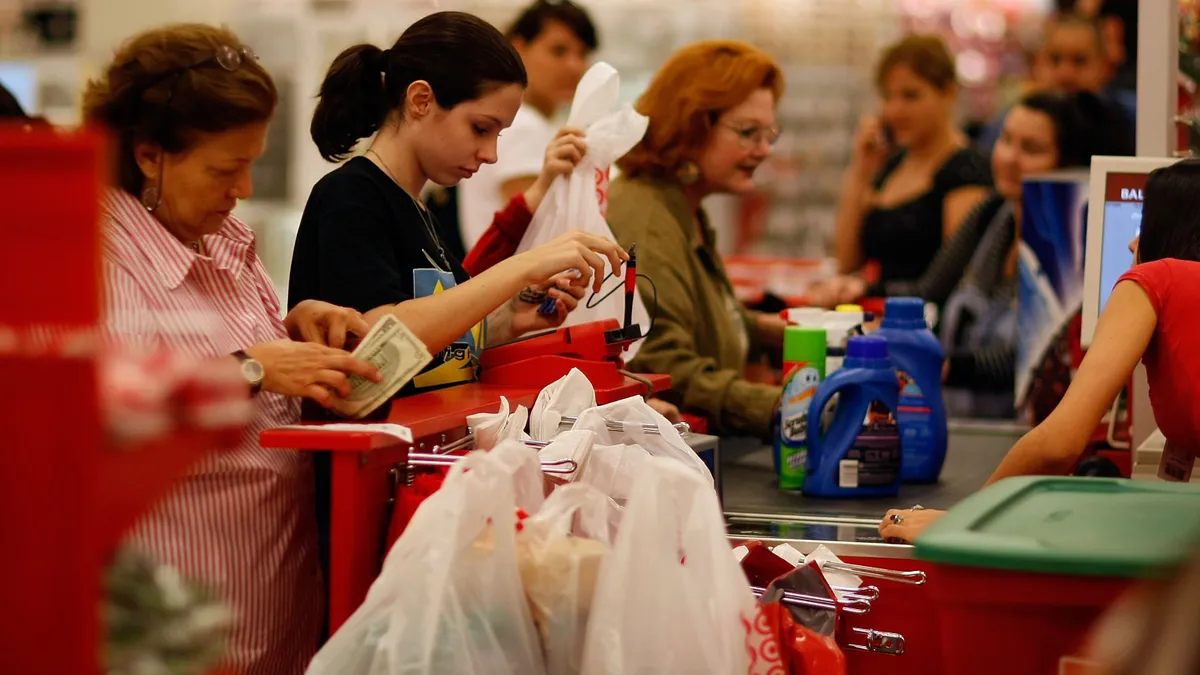Dive Brief:
-
Retail trade employment fell slightly in March, down by 4,000 after increasing 47,000 in February, the U.S. Bureau of Labor Statistics reported Friday. General merchandise store jobs fell by 13,000, entirely offsetting February’s gain. Total nonfarm employment in March edged up by just 103,000 in March, and the unemployment rate remained at 4.1% where it’s been for six straight months.
-
The National Retail Federation, meanwhile, said March retail employment fell by 6,400 jobs seasonally adjusted but noted an increase of 30,800 unadjusted year-over-year. Retail leads all sectors in job cuts in 2018, with 56,526, according to a report Thursday from global outplacement firm Challenger, Gray & Christmas. The firm this year has tracked 1,730 announced store closures, on top of 9,241 last year.
-
Job cuts announced by U.S.-based employers surged 71% in March to 60,357, the highest monthly total since April 2016's 64,141 job cuts, according to Challenger, Gray & Christmas. Hiring also fell in March, as companies announced plans to hire 14,525 last month, bringing the year-to-date total to 196,340, 32% lower than in the first quarter last year.
Dive Insight:
The March employment picture was a disappointment, and some experts believe that uncertainties introduced by talk of tariffs and trade wars may be interrupting an employment turnaround.
"Whether trade tensions and threats come to fruition or not, even if there’s not follow-through, the lingering uncertainty and the market volatility that it creates will start to permeate business decisions and household decisions," Ellen Zentner, chief United States economist for Morgan Stanley, told the New York Times, noting signs that wealthier households are losing some confidence.
But it's a time of year when storms and the fluctuating timing of holidays can be disruptive, and that should be taken into account, according to NRF Chief Economist Jack Kleinhenz, who insisted in a statement that, "Retail has not taken a step backward."
Despite March’s pullback, "the trend is in the right direction," he said. "This time of year can be quirky given weather and the timing of Easter and Passover. We should be pleased with the broader picture because the economy is growing, creating substantial job gains at this time during the expansion. Even with this month’s dip, retail employment is still substantially higher than the beginning of the year and this time last year."
Challenger CEO John Challenger said macroeconomic fundamentals underpinning the economy remain strong, and that companies are in a position to invest. However, he also cautioned that a period of job creation may be coming to an end as wages grow and labor markets tighten.
Wage growth remained moderate, especially in light of the tightening labor market. In March, average hourly earnings of private nonfarm payrolls rose 8 cents to $26.82, according to the Labor Department’s report. Over the year, average hourly earnings have increased by 71 cents, or 2.7%, and for private-sector production and nonsupervisory employees rose by 4 cents to $22.42 in the month, according to the government. That could change as the labor market continues to tighten, according to prepared remarks Friday from Federal Reserve Chairman Jerome Powell, who also noted, however, that automation and globalization, which did contribute to productivity, have also dislocated many workers without college degrees and in manufacturing. He also pinned some persistent underemployment to the opioid crisis.












